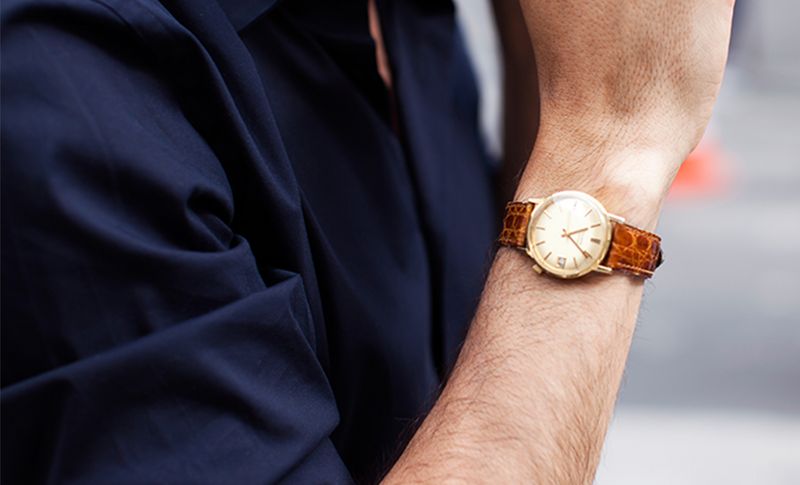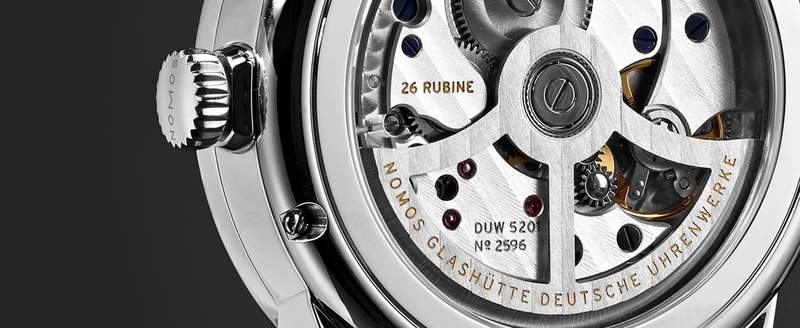
What Watch Size Is Right For You?

What Watch Size Is Right For You?

What Watch Size Is Right For You?

Eyes On The Size
“Life’s this game of inches.” These words, from the 1999 movie Any Given Sunday, are delivered by Mr Al Pacino’s ageing football coach Tony D’Amato as he addresses his team in the locker room before the biggest game of the season. It is regarded as one of the most iconic motivational speeches in cinematic history.
Imagine for a moment, though, that Any Given Sunday was set not in the world of professional football, but of Swiss haute horlogerie. It would have been a very different movie indeed, not least because Mr Pacino would have been forced to ditch the Imperial system. In watchmaking, after all, life is not a game of inches, but of millimetres.
The diameter of a watch, measured in millimetres, is the biggest clue to how it will look on your wrist. It can also hint at what's going on inside the case, and even the era in which it was designed. Without context, though, these numbers don't mean a great deal, which is why we’ve put together this handy guide.

Vintage Patek Philippe Calatrava 3602 (34mm). Photograph by Stockholm Streetstyle/Blaublut-Edition.com
Sub-36mm
You’ll struggle to find many men’s watches below 36mm in today’s market, but it was the norm just a few decades ago, so there's no shortage of choice in the pre-owned market. Of course, men's wrists haven’t grown since then, just tastes and trends – so it really is extraordinary that a sub-36mm watch looks and feels so strange these days. But if you really want to fly under that radar, our advice would be to opt for an overtly dressy vintage number, such as a yellow-gold 1950s Cartier Tank on patent leather. A glimmer of gold as it peeps out from the cuff of a tailored shirt should keep the watch from being lost in a sea of flesh.

Vintage Jaeger LeCoultre Memovox (37mm). Photograph by Mr Robert Spangle/Thousand Yard Style
36-38mm
The most interesting watch trend in recent years has been the scaling-back of men’s sizes after a seemingly perpetual craze for wrist-borne beasts. Or rather, the re-entry of 36-38mm case diameters to catalogues still listing wrist-borne beasts, in a move to a) sensibly balance-out an offering that has tended towards the large man, flashy man, or both; b) sensibly offer wearable watches for women who aren’t after diamonds, pink and little else (see Oris’ contemporary Sixty-Fives as a case in point); c) sensibly exhume gorgeous mid-century styles in the size they were originally designed for. In a word? Sensible.

Junghans Max Bill Chronoscope (40mm). Photograph by Mr Robert Spangle/Thousand Yard Style
38-41mm
Dig out a tape measure (or print one out) and wear it like a watch. Assuming your wrist circumference falls into an man’s typical 16–19cm circumference, and based on the modern preference for a more substantial presence on the wrist (after all, how else will people notice your savvy purchase?) the 38–41mm sweet spot will serve you best across most sartorial scenarios, from dinner suit to wetsuit. Amazing to think 38mm was once considered ‘oversize’, as you really can’t go wrong, in our opinion…

Bremont Alt1 Classic Chronograph (43mm). Photograph by Guerreisms
42-44mm
Beyond a 42mm case diameter, we’re edging into “oversize” territory – a trend kickstarted by IWC Schaffhausen and Officine Panerai in the mid-1990s, whose respective Portugieser and Luminor were loud-and-proud torchbearers for Swiss watchmaking's revival. The Portugieser was originally based on a large, chronometer-precise pocket-watch movement back in the 1930s, and the Luminor needed to survive a subaqua ordeal on the wrist of military frogmen back in the 1950s. So that, then, is everything you need to justify an oversize case: the diameter of the movement inside or the specialist purpose of the case. Of course, there's a chance you’re simply a bigger gentleman with a wrist circumference over 20cm, in which case 42-44mm is definitely the bracket you want to shop within, and it's well served by nearly every watchmaker.

IWC Schaffhausen Big Pilot’s (46mm). Photograph by Mr Robert Spangle/Thousand Yard Style
45mm And Beyond
Unless you’re a world-champion arm wrestler, the lugs of your watch are guaranteed to hang over your wrist at this size – a look that only a select few will carry off, like capacious shoulder pads on a slim double-breasted jacket. Believe it or not, IWC’s 46mm Big Pilot’s started life at 55mm, strapped to the thigh of Luftwaffe bomber navigators during WWII, so it’s almost the subtle choice. Much like Zenith’s 45mm Pilot Type 20, in fact. On the other hand, there’s Bell & Ross’ modern-era classic, the unrelentingly square BR 01. If you can pull it off, then get yourself a set of those shoulder pads, sir. Or a flight suit and fighter jet. Either way.

Piaget 60th anniversary Altiplano (40mm). Photograph courtesy of Piaget
The Fourth Dimension
So you have your x and y axes sorted, plus of course time itself. But what of that fourth dimension, the z axis, which protrudes from your wrist? In an increasingly online retail environment, the height of a watch is often overlooked in favour of those face-on beauty shots. But through thick and thin, it makes as much difference to “wrist presence” as case diameter, not to mention the state of your French cuffs (if you can squeeze it under in the first place). Piaget’s Altiplano is the undisputed king of slim, its basic Altiplano the 6mm-high benchmark of slender dress watches (ultra-thin watchmaking being a haute horlogerie arms race of its own). Anything that protrudes from your wrist by more than a centimeter, however, needs one or more of three things to justify proceedings: proportionate case diameter; necessarily chunky diving-watch status; or a “modular” movement ticking away inside, where extra mechanical functionality such as a chronograph is stacked on top of the “base” timekeeping powerhouse.

YOU’VE GOT THE KNOWLEDGE…
Now put it to use. We’re constantly adding new styles, limited editions and exclusives to our luxury watch selection. Find the one that’s right for you.